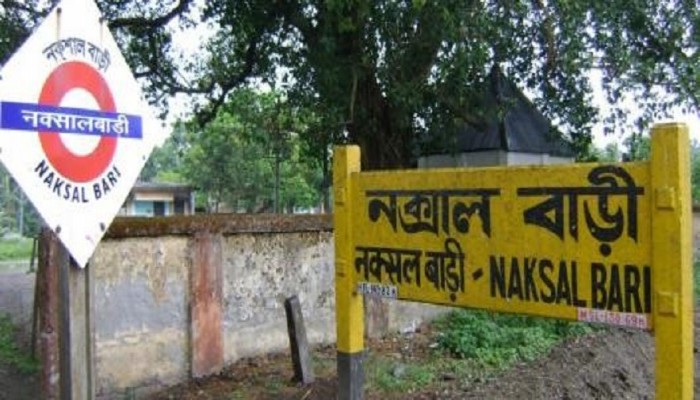50 Years of Naxalbari: the era of Red terror
- In History & Culture
- 01:10 PM, Jun 05, 2017
- Ranabir Bhattacharyya
The photos of innocent jawans killed in Maoist attack in Sukma are still fresh in our minds. The last few decades have witnessed an uprising in the red corridor. But the legacy of red terror in Indian subcontinent dates back to the Naxalite movement. Fifty years ago, in the hot summer of 1967, India witnessed the first naxal attack when a sub-inspector was killed in an organized attack near Naxalbari village in erstwhile Siliguri sub-division of Darjeeling district in West Bengal. The beginning of 1967 witnessed the rise of red separatist movement when Communist Party of India (Marxist) leaders Charu Mazumdar, Kanu Sanyal and Jangal Santhal chose armed uprising against the big landowners and zamindars.
In the beginning, they announced that their sole objective or target is to snatch the lands of big zamindars and distribute it among the farmers and labourers. No doubt, their whole work plan didn't care for existing laws of Indian Penal Code and a motivated agenda to fulfill personal needs and Marxist future in India. Interestingly, in spite of the factions and lack of coordination between the Communist parties in India, the radicalization of the Communist movement in India reached its peak at this point of time. Slogans like 'Langor jaar, Jamin taar (Land belongs to him, who tills it)' echoed across the villages of Bengal. Charu Mazumdar, urged the tribal peasants to forcibly grab the land of zamindars aka landlords, groups of tribals armed with bows and arrows ransacked local police stations and government officials, shopkeepers and landlords were lynched to death.
Nevertheless, the Naxal movement failed to live up to its expectations, as it became a political tool. It is a clear case of class war going wrong. Be it the case of 'Eight Historic Writings' of Charu Majumdar or the target of annihilation in the lines of Mao, the whole idea of class movement turned into a civil war. The Naxalite Movement reached violent proportions and no doubt, erstwhile Prime Minister Indira Gandhi had no other option but to opt for Operation Steeplechase, where she utilized the Indian Army and paramilitary forces to kill hundreds of Naxalites and imprisoning more than 20,000 suspects and cadres, including senior leaders. In Bengal, erstwhile Chief Minister Siddhartha Shankar Ray opted for an effective counter measure against the Naxalites.
The role of the Chinese also needs to be assessed after all these years. At that juncture of time, China announced their ideological affinity to the course of action opted by Charu Mazumdar and his associates. Radio Beijing came out with a long broadcast emphasizing on the need to make the Naxalite movement a successful one in India. There is no denying the fact that the Chinese political authorities supplied weapons and other necessaries to create chaos and anarchy in India.
.
Interestingly, the attitude of successive central governments has been surprising apart from Indira Gandhi's desperate attempt in 1969. It won't be an exaggeration to say, if the Naxalite movement was handled well and loopholes of tribal governance looked into as well as initiating development in the remotest rural areas, India could have avoided the legacy of notorious red terror prevalent at present. Sloppy insensitive approach from decades of Congress governments at the centre didn't at all help curbing the Maoist terror which began in Naxalbari era. Indian Communist Parties, have categorically helped and nurtured such hatred among the youth. The irony is, in 2008, erstwhile Prime Minister Manmohan Singh referred Maoist threat to be biggest vulnerability to India's internal integrity.
Naxalbari movement also highlighted the inability of bureaucratic system to understand the socio-economic barrier and the anti-nationalist forces nurturing the young minds with deadly ideas. Be it Naxalite movement or Khalistani movement or proxy war in Jammu & Kashmir, the failure to feel the pulse of the local anger and quell it at the right time has cost India heavily.
Disclaimer: The opinions expressed within this article are the personal opinions of the author. MyIndMakers is not responsible for the accuracy, completeness, suitability, or validity of any information on this article. All information is provided on an as-is basis. The information, facts or opinions appearing in the article do not reflect the views of MyindMakers and it does not assume any responsibility or liability for the same.







Comments